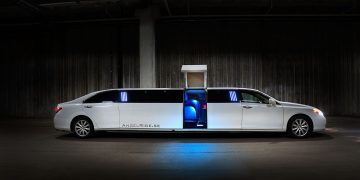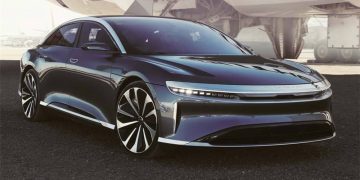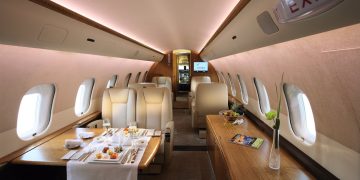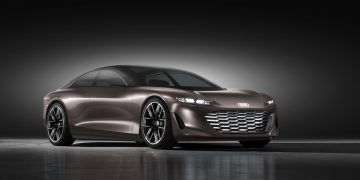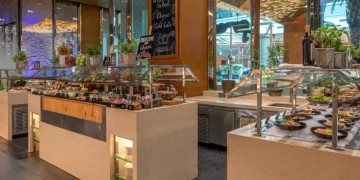In the realm of luxury living, design has always been a defining factor, symbolizing both status and taste. However, as we move further into the 21st century, traditional notions of luxury are rapidly evolving. While classical architecture still holds a timeless appeal, there’s an undeniable shift toward futuristic, ultra-modern designs that push the boundaries of architecture and redefine the concept of a “dream home.” Today’s luxury homes are not just spaces for living—they are statements of innovation, embracing new materials, advanced technologies, and eco-conscious design principles.
As architects and designers strive to integrate the latest advancements in materials, technology, and sustainability, luxury homes are transforming into high-tech, visually stunning, and environmentally responsible spaces. In this article, we will explore how cutting-edge design is shaping the future of luxury homes, from the use of innovative materials and AI-driven automation to iconic modern houses that are setting new standards for opulence and functionality.
The Shift Towards Futuristic, Ultra-Modern Designs in Luxury Homes
Luxury has long been associated with grandiose spaces, classic materials, and intricate detailing. But as technology advances and societal values change, the notion of what makes a “luxury” home is evolving. The future of luxury design is increasingly focused on minimalism, clean lines, open spaces, and integration with the natural environment. The modern luxury home is not about excess; it’s about curated elegance, functionality, and the seamless blending of aesthetics with state-of-the-art technology.
The rise of contemporary, ultra-modern architecture is transforming luxury living in profound ways. Homes are becoming more open and fluid, embracing open floor plans that flow effortlessly from one space to another. Large, expansive windows invite nature indoors, and indoor-outdoor living spaces are increasingly popular, reflecting a desire for connection with the natural world. Aesthetic appeal is no longer just about lavish decorations or ornate finishes; it’s about creating a visually striking experience that incorporates the environment, sustainability, and cutting-edge technology.
This shift in design philosophy is also reflected in the materials used in these homes. Glass walls, sleek metal finishes, and minimalist concrete structures are replacing the heavy, dark wood and stone of the past, allowing for greater light, openness, and connectivity between the interior and exterior. As homeowners increasingly seek sustainable and energy-efficient solutions, the materials chosen for these homes are not just about looks—they are also about reducing the ecological footprint and increasing the overall efficiency of the structure.
Innovative Materials: Glass Walls, Smart Homes, and Sustainable Architecture
The materials used in luxury homes today are fundamentally different from what was used in traditional designs, and they play a key role in enhancing both the functionality and aesthetic appeal of the space. Several innovative materials are becoming staples in ultra-modern architecture, with glass, smart technology, and sustainable building materials leading the way.
1. Glass Walls and Floor-to-Ceiling Windows
One of the most notable features of modern luxury homes is the use of expansive glass walls and floor-to-ceiling windows. These not only provide stunning views of the surrounding landscape but also allow for an abundance of natural light to flood the interior. The transparency of glass creates a sense of openness and connectivity with the outdoors, breaking down the traditional barriers between the interior of the home and its natural environment. Advanced glass technology has also made these windows more energy-efficient, allowing homeowners to enjoy both the aesthetic benefits and the functional advantages, such as improved insulation and soundproofing.
2. Smart Homes and Automation
Smart home technology is revolutionizing the way luxury homes are designed and experienced. No longer limited to simple features like lighting control or security cameras, today’s smart homes are deeply integrated with advanced automation systems that manage everything from heating and cooling to entertainment and security. The advent of AI-powered systems allows homeowners to control virtually every aspect of their home from their smartphone, including adjusting the temperature, managing lighting, monitoring security cameras, and even controlling appliances.
In ultra-modern homes, automation goes beyond convenience—it enhances the overall living experience, ensuring maximum comfort, efficiency, and safety. AI-powered assistants, personalized climate control, and voice-activated systems are helping to create homes that adapt to the needs and preferences of their owners, making life easier and more luxurious.
3. Sustainable Architecture
As climate change becomes an increasingly urgent issue, sustainability is playing a significant role in the future of luxury architecture. The future luxury home is not just a product of design innovation but is also a model of environmental consciousness. Sustainable materials, energy-efficient designs, and green technologies are essential elements of the ultra-modern home, aligning luxury with responsibility.
Green roofs, solar panels, rainwater harvesting systems, and geothermal heating are just a few of the sustainable features becoming standard in high-end homes. The use of recycled materials, like reclaimed wood, sustainable bamboo, and eco-friendly insulation, is gaining traction as homeowners seek to reduce their carbon footprint. The emphasis is no longer on excess; it’s about building smart, efficient homes that respect the environment while offering maximum comfort.
Tech-Integrated Living: How Automation and AI Redefine Luxury Interiors
Incorporating the latest technology into luxury homes goes far beyond just smart lighting or automated heating. The integration of AI, augmented reality (AR), and Internet of Things (IoT) devices is redefining the modern living experience. From voice-activated assistants that control your home to entire rooms designed for virtual reality (VR) entertainment, the future of luxury homes will be highly interactive, responsive, and adaptive.
1. Artificial Intelligence (AI) and Personalized Living
AI is becoming a fundamental part of luxury home automation, allowing homes to learn the habits, preferences, and routines of the inhabitants. Smart systems powered by AI can optimize energy consumption by adjusting heating and lighting based on the time of day and the presence of people in a room. The technology can also adapt to the specific needs of each person, such as adjusting the home’s environment to promote relaxation, focus, or productivity based on individual preferences.
2. Virtual and Augmented Reality (VR/AR)
In luxury homes, VR and AR are not just for entertainment; they are also integrated into design and daily living. Virtual reality rooms can offer fully immersive gaming or movie experiences, while augmented reality is being used in interior design, allowing homeowners to visualize changes to their home in real time before making alterations. This technology also plays a role in virtual tours and home security systems, where AR can overlay information in real time, such as security alerts or updates on household tasks.
3. Smart Furniture and Appliances
Furniture is also becoming “smarter,” with innovations like voice-activated lighting, self-cleaning surfaces, and furniture that adjusts to the user’s needs. For instance, smart beds that monitor sleep quality, ergonomic chairs that adjust based on body posture, and kitchens equipped with smart appliances that track nutrition and cooking preferences are becoming more common in ultra-modern homes. These advancements integrate seamlessly into the living experience, offering both comfort and functionality.
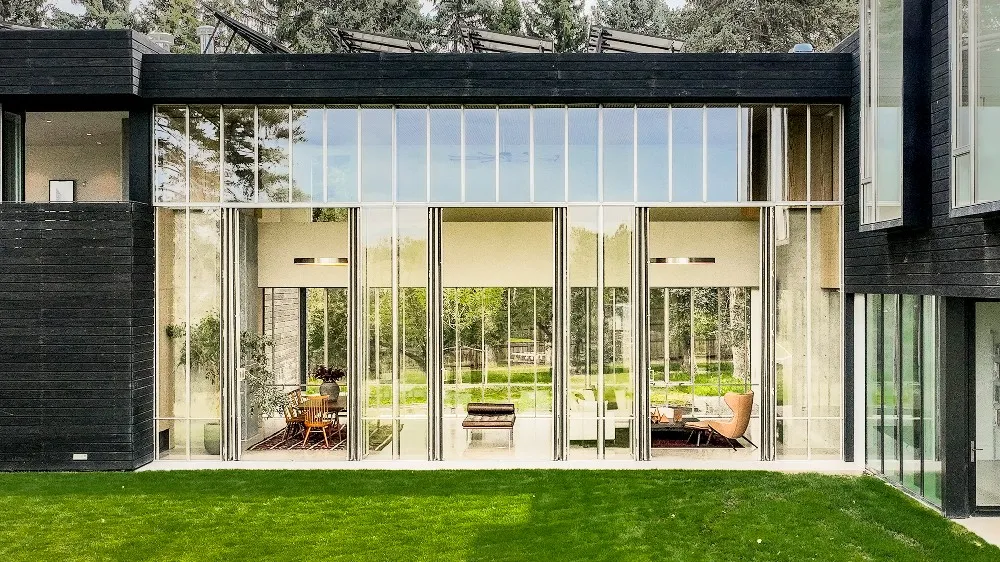
Iconic Modern Homes: The Houses Pushing the Boundaries of Design
Around the world, there are numerous iconic modern homes that showcase the potential of futuristic, ultra-modern design. These homes are not only architectural marvels but also demonstrate how luxury and technology can coexist in harmony.
1. The Glass House (New Canaan, Connecticut)
Designed by Philip Johnson, the Glass House is one of the most iconic examples of modern architecture. With its clear glass walls and minimalist design, the house creates a seamless connection with the surrounding nature, exemplifying the trend toward transparency and openness in modern luxury homes. The structure embodies the idea of simplicity, yet it offers a sense of grandeur due to its sheer scale and the innovative use of glass as a building material.
2. Villa Vals (Vals, Switzerland)
Villa Vals, a stunning example of modern luxury architecture, is built into the mountainside in the Swiss Alps. The house is designed to blend harmoniously with its natural surroundings, using concrete, wood, and stone to create a sleek, minimalist look that is in stark contrast to the traditional alpine architecture. Large glass windows allow residents to experience breathtaking views of the surrounding landscape, while sustainable design features ensure energy efficiency and a low environmental impact.
3. The One (Los Angeles, California)
The One is a sprawling mansion in Bel Air that redefines what it means to live luxuriously. Boasting 105,000 square feet, 21 bedrooms, 42 bathrooms, and a host of amenities like a nightclub, a four-lane bowling alley, and a 400-foot rooftop pool, The One is a prime example of how futuristic design can merge with extreme luxury. The house uses smart home technology throughout, with AI-driven systems that manage everything from temperature to security. It represents the epitome of modern opulence, where cutting-edge technology meets world-class design.
Building for Tomorrow: The Role of Sustainability in Future Luxury Architecture
Sustainability is no longer just a buzzword in luxury architecture—it is an imperative. As more homeowners become environmentally conscious, future luxury homes will be built to meet rigorous sustainability standards while maintaining the highest levels of comfort and sophistication. This includes using energy-efficient materials, incorporating renewable energy sources like solar and wind power, and ensuring that homes are built with low environmental impact in mind.
Architects and designers are increasingly focused on creating homes that not only offer luxurious living spaces but are also built with the future of the planet in mind. From the construction process itself to the materials used, the future of luxury design will embrace environmentally friendly choices without sacrificing style or comfort.
Conclusion: Why These Ultra-Modern Homes Are Shaping the Future of Luxury Living
The future of luxury design is one of innovation, efficiency, and personalization. Ultra-modern homes are redefining what it means to live in luxury, blending cutting-edge technology with sustainable practices and striking aesthetic design. As architects and designers continue to push the boundaries of what is possible, the homes of tomorrow will provide not just a place to live but a holistic,
immersive experience that merges function, beauty, and responsibility.
These futuristic homes represent the evolution of luxury living, where convenience, comfort, and environmental consciousness are harmoniously intertwined. As we look to the future, it is clear that the homes of tomorrow will not just be places to live—they will be symbols of a new era of intelligent, responsible, and stylish living.

